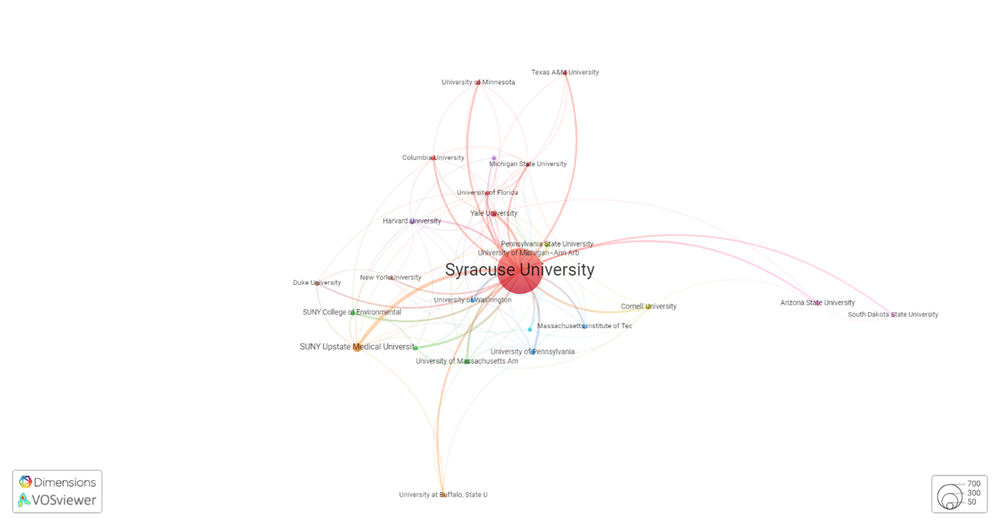Collection Spotlight: Dimensions

Dimensions VOSViewer network visualization - Top 25 institutions that SU authors collaborated with on publications in 2021 and 2022.
by Emily Hart, Science Librarian, Research Impact Lead
The Libraries recently, subscribed to the database, Dimensions. This is a valuable new resource that will provide access to current peer reviewed literature, preprints, book chapters, grants, datasets, clinical trials, policy documents, patents, and more, all searchable from a single location. Dimensions is a large literature index that also includes a robust reporting and analytics dashboard, in addition to the ability to create your own account (My Account) to save searches and set up email alerts to follow prominent authors and literature in your field.
Because the Dimensions database includes some books, book chapters, and non-traditional literature like policy documents, patents, datasets, and clinical trials, its coverage of disciplines like the social sciences is somewhat improved over databases like Scopus and Web of Science that do not index as much non-journal content.
Dimensions will be an important tool for understanding and reporting on the research and scholarship produced at Syracuse University, and as a benchmarking tool for comparison with other institutions. Dimensions includes built-in analysis features that auto-generate visualizations of things like research outputs and collaboration networks using a freely available tool called VOSViewer. Our Dimensions subscription also includes a limited number of API connections that are available to researchers interested in doing a more in-depth analysis of the documents included within Dimensions.
Here are a few reasons why SU students, staff, and faculty may be interested in using Dimensions:
- Find literature to support your article, literature review, or grant proposal
- Stay on top of current literature in your field:
- Find awarded grants:
- Understand the research and scholarship happening at SU and beyond with custom reports and analysis:
- Recognize the types of attention SU researchers are receiving for their works (citation counts & altmetrics data)
- Create visualizations such as graphs and collaboration networks for presentations or reports
- Create custom groups of documents, people, grants, etc. in your personal Dimensions account. If you would like to share these groups with others at the University, contact the Libraries’ Research Impact Team at riteam@syr.edu
